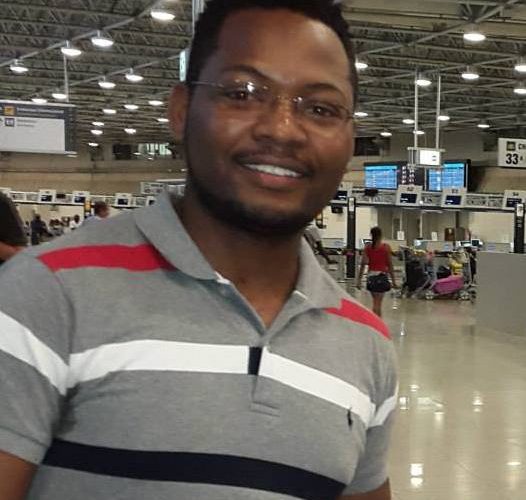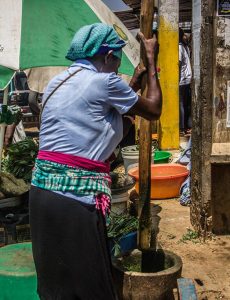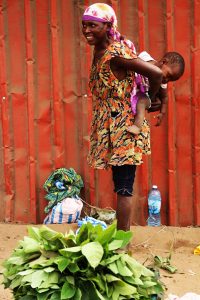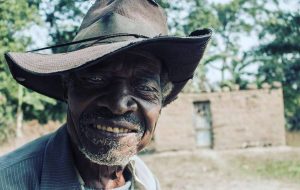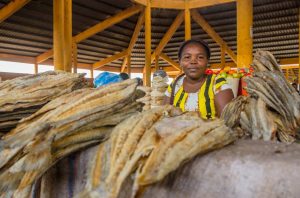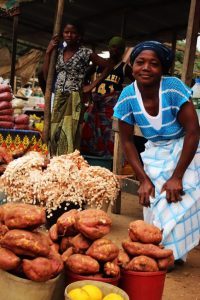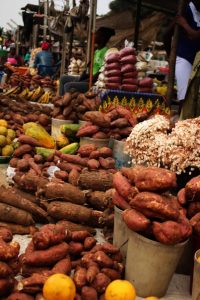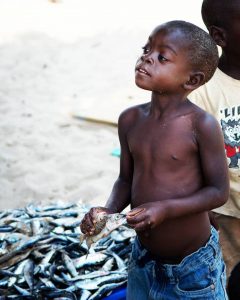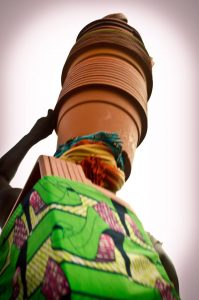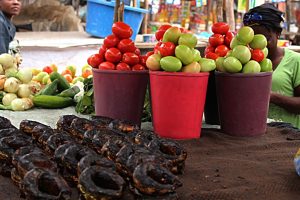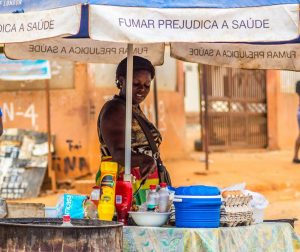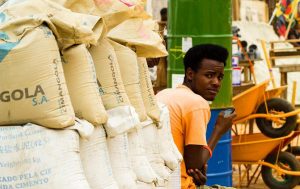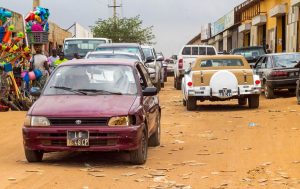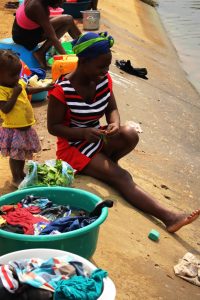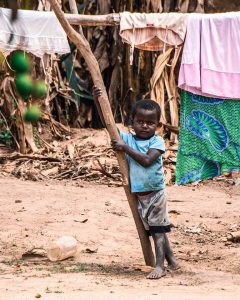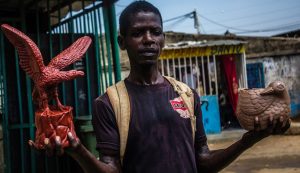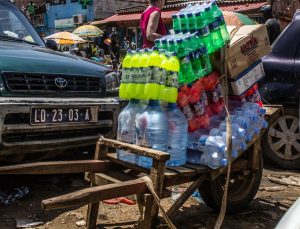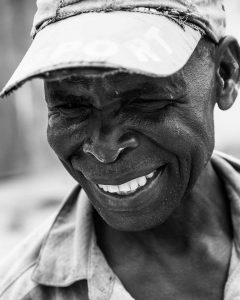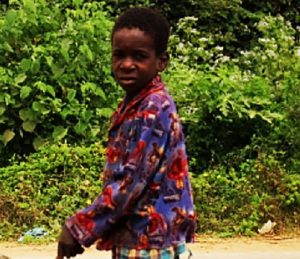[Luanda, Angola to Rio de Janeiro, Brazil]
Though we would like to think that photographs objectively capture a moment–Click. Flash. Historical event recorded as it occurred–photographs can actually be much more complex. Photographers can shape the messages they seek to convey by how they select their subjects; by the angles they create to capture their images; and even in the ways in which they edit their photos–cropped, lighting adjustments, pixel alterations, etc.
Yet, for photographers who have migrated and chosen to live in a different place and then return home, whether temporarily or with the intent to stay, their photographs illuminate a great deal about their perceptions of the migratory experience: They can unveil what photographers value about their homelands, what they recognized as effectively capturing the identity of their places of origin, what they remember and miss most after resettling elsewhere.
Though Julio Adelino, a 30-year-old graphic designer at the Angolan Cultural Center and student of Systems Analysis and Development in Rio de Janeiro, may not have intentionally framed his images to depict facets of his migratory experience, those he captured during his trips to visit family in Luanda, Angola in fact tell a lot about the lens a photographer who had migrated uses while behind the camera.
I met Julio in June of 2017 at the Cultural Center, located adjacent to the Angolan Consulate in Rio de Janeiro. He had agreed, though reluctantly, to participate in a series of interviews I was conducting to understand more about the migratory experience of immigrants and refugees from Portuguese Africa in Brazil. (His story, along with the stories of some of his colleagues, will appear in the ‘Migrant Stories’ section of this site.) As the interview progressed, his engagement with my questions and our discussion evolved. His body language became more relaxed. He responded to my questions with increasing enthusiasm. And while the interview was undoubtedly informative for me, it seemed to be particularly self-reflective and cathartic for him.
Julio eventually revealed that he was a photographer. In fact, the Cultural Center administrators had publicly featured the photos he took of official events–people in business attire at roundtable discussions, for example–but that he had hoped to showcase his more creative work, perhaps in a different setting. Though at that point, I hadn’t seen his work, I encouraged him. As a life mantra, I strongly believe in the importance of cultivating a creative outlet. I also value pursuing those goals we envision for ourselves, but too often neglect or undermine. I, for one, admit that although I have wanted to write this blog for months, knowing that this work is important and necessary, I consistently procrastinated, instead filling my hours with meetings, additional academic readings, and various others events. Therefore, one of the reasons for this ‘Migration in Photos’ initiative is to help Julio and me simultaneously realize our personal and creative objectives.
“I always hope to capture the emotions, the joy of the people, capture everything that is born from the inside out.” -Julio Adelino
I convinced Julio to send me some of his work. After opening up his email containing the images of one of his trips to Luanda, I found myself slowly sitting back in my chair at work, leaving the files to remain open and cascading across my desktop. They were vibrant, provocative, and the radiant smiles of many of their subjects left me smiling in return. I called over one of my colleagues: “Are these beautiful?” He agreed. As I continued to scan through the images, I found the ways in which Julio captured his Angola from his perspective particularly remarkable.
Though Julio’s decision to migrate to Brazil forced him to be physically disengaged from this place that was clearly integral to his identity, Julio’s photographs unveiled his emotional connections with Angola that distance could not break. He later told me, “I always hope to capture the emotions, the joy of the people, capture everything that is born from the inside out.” He added, “I am very sensitive. I really like to appreciate people and human nature–everything that God created.”
Julio’s evolving connections with photography reflect his sensitivity. He told me, “One of the greatest experiences I had was when I spent two years teaching children. I loved the innocence and creativity of each child, and that really made me think. At the time, I was taking photographs for publicity. But then I started taking pictures of people in my free time. I went out on my bike and would take pictures. That’s how my interest in photography was born.” He noted that out of respect, he doesn’t take photos of traditional cultural events. He also alluded to the apparent danger involved in openly taking photos, though this danger is changing along with the shifting political climate in contemporary Angola.
This tense political climate refers to more than 30 years of political instability and violence wrought by civil war since Angola acquired its independence from Portugal in 1975. Despite this hardship, Julio seeks to portray a different story of the struggle: “[The photos] convey the new beginning of life of a people who have lived more than 30 years of war, [who] today smile with happiness and hope for a better life.” On how his personal experiences with migration have influenced his photography, he said that he sees Brazil differently after his last visit. He also noted that he perceives ways of life and behavior in Angola in ways that he didn’t notice before moving to Brazil: “[Relocating] influenced me in a positive way. I’ve started to have a different way of looking at things than I did before.” I hope to continue to feature his transforming perceptions of those ‘things’ that capture his attention and to challenge him to think about these ‘things’ in the context of migration.
[All photos have been featured with permission of Julio Adelino, the photographer.]
